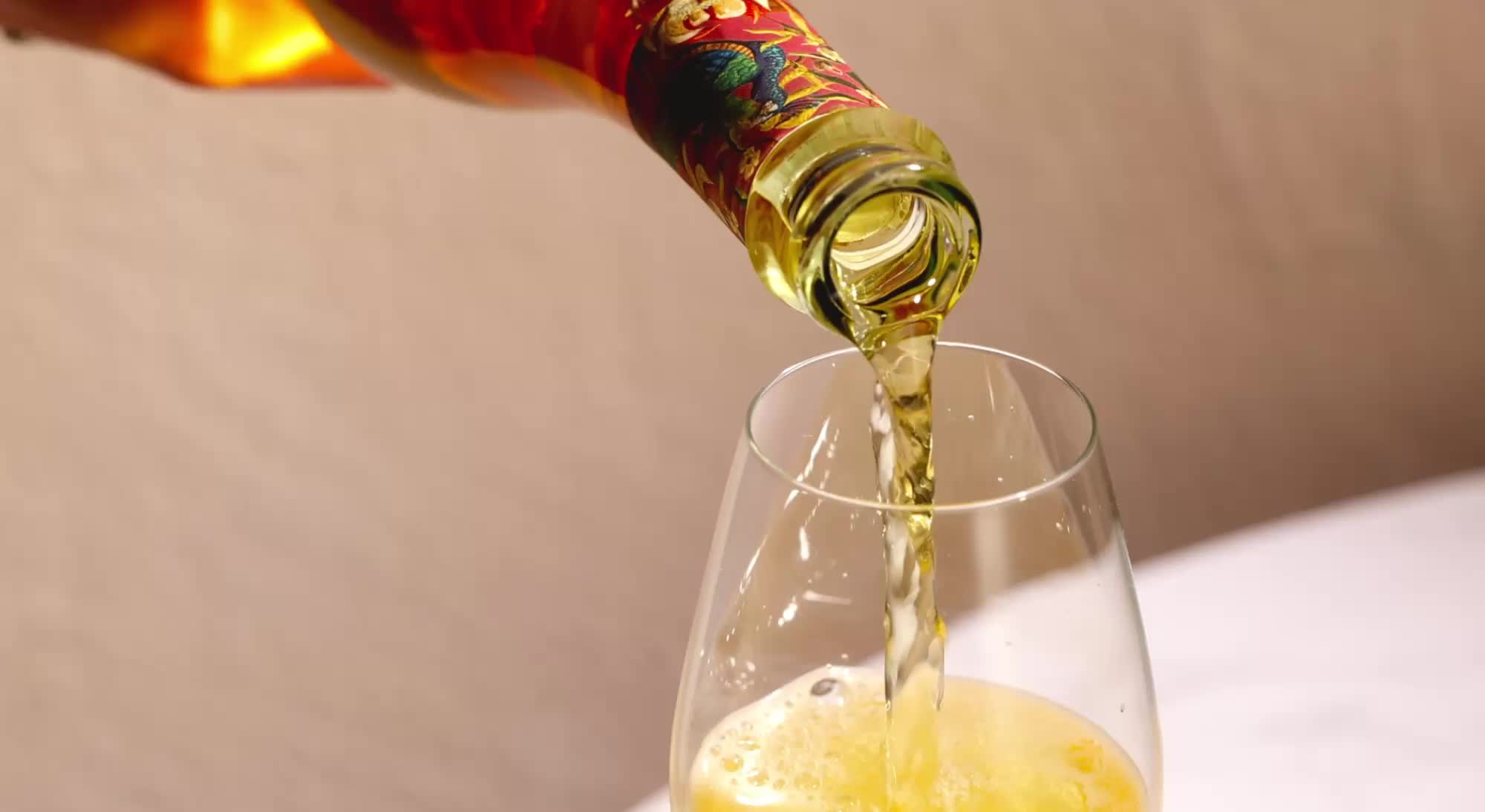Feature
Sparkling teas eye non-alc opening
Sparkling tea has emerged as an option in the upmarket on-trade – and, increasingly, retail – for consumers looking to cut back on alcohol. Dean Best weighs up how the fledgling category might develop.
Main video credit: Saicho
With more drinkers at least moderating their consumption if not entirely cutting out alcohol, brands are battling it out to tap into demand for tasty, good-quality options – and those behind sparkling tea believe they can muscle in.
“It’s there and it’s happening. We’re leading the charge in that,” David Begg, the founder and CEO of UK-based The Real Co., says.
The Real Co. isn’t alone. The likes of Saicho, another UK-based sparkling-tea business, Denmark’s Copenhagen Sparkling Tea Company and Lithuania’s AcalaDrinks, are at the forefront of a category that, while still in its early stages, is winning custom, particularly in high-end, on-trade venues and specialist retailers but, in certain markets, more mainstream off-trade settings, too.
Flavour and food
Anyone working in food and beverage knows taste is a key component of any sustained success a brand might enjoy. “Taste is king” is something of a truism but, amid all the corporate and investor attention on moderation and how that’s shaking up the beverage sector, it’s a truism worth underlining: more drinkers might now be interested in non-alcoholic options but they need to be won over – and retained – by the products on offer.
Sparkling tea remains a fledgling market but, so far, it has principally taken root in the on-trade, where brands have found success in pairing their products with food.
The way most of our consumers find us is in restaurants and in hotels.
Charlie Winkworth-Smith
“Our initial focus in all new markets is the on-trade because our sparkling teas really shine with food pairing,” explains Saicho founder Charlie Winkworth-Smith. “That’s kind of why we started the brand. Also, for people that aren’t familiar with sparkling tea, having the sommelier say this is a great product to have is a great way in for consumers.”
Saicho sells its range of single-origin sparkling teas – which include a jasmine, a darjeeling and a hojicha – in “more than 100 Michelin-star restaurants” and hotel groups like Four Seasons and Mandarin Oriental, Winkworth-Smith, who set up the business in 2019, says. “The way most of our consumers find us is in restaurants and in hotels,” he adds. “We work with such great places that it’s the sommeliers and the wine directors that are the Saicho, the sparkling tea, advocates.”
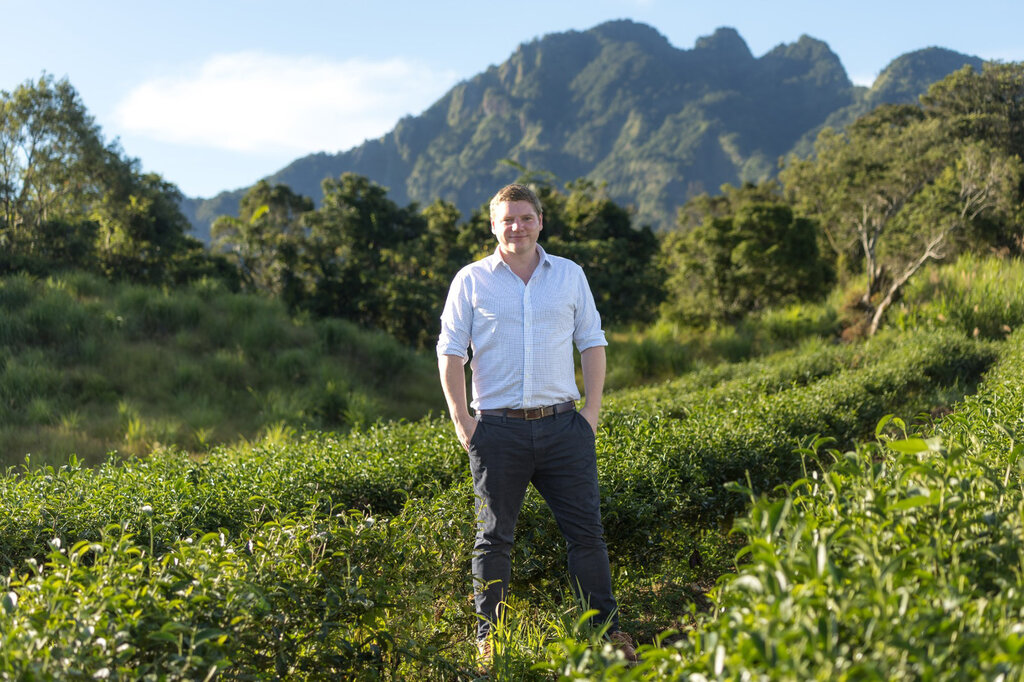
Saicho founder Charlie Winkworth-Smith. Credit: Saicho
Matching with food is also central to the products marketed by The Real Co. and Begg argues the company’s fermented teas can offer a consumer something different from its peers. “I’m not knocking any of the other great sparkling teas on the market,” he says. “There are two directions: you go more pure-play sparkling tea. They are, let’s say, a little thin once they end up as a packaged product. Or you end up adding lots of other additives to it to try and give it body.
“We can get all of that body through the fermentation process itself. It’s a natural method of developing flavour and it’s one of the primary carriers of flavour. We’re not pretending to taste like a wine but we’ve got all the critical characteristics of a wine in there, which also gives you that full fullness of flavour but also enables us to pair very well with food.”
Inroads into retail
Sparkling tea is finding favour with retailers. Products tend to be most readily available in specialist or upmarket outlets – Saicho, for example, is stocked in Harrods and is set to go on sale at UK wine retailer Majestic – but The Real Co.’s teas are on sale at mainstream UK grocers Sainsbury’s and Waitrose.
Copenhagen Sparkling Tea has taken a slightly different tack. The company was founded in 2017 and, like its peers, has focused on the more upmarket ends of the on-trade and high-end retailers. The business’s teas, for example, are stocked at Fortnum & Mason in the UK and the company also produces own-label sparkling tea for the London department store. The UK is the firm’s biggest market.
However, three years ago, Copenhagen Sparkling Tea’s founders – Jacob Kocemba and Bo Sten Hansen – set up a separate business to target mainstream retail accounts. The Sparkling T, which also has a former Moët Hennessy executive as a shareholder, has since won listings at grocers in Europe and supplies a US retailer with white-label sparkling teas.
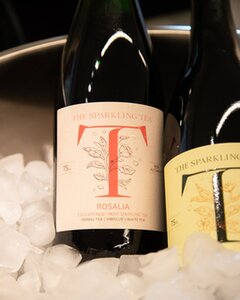
Credit: The Sparkling T / Facebook
Sten Hansen won’t disclose the US retailer but says the deal makes the country the largest market for The Sparkling T (“when you have a national retailer, you can get the rest of your business funded,” he quips) and adds the firm’s branded drinks are sold at European grocers including Denmark’s Coop, Spar in Hungary and Carrefour in Spain.
The ”sister companies” market their teas at different price points, Hansen says, with Copenhagen Sparkling Tea’s at around €20-22 (which translates to $23-25 though US tariffs mean the teas are on sale for $30-35) and The Sparkling T’s drinks available for €10-12 in Europe. The teas are made differently but the “end product is still a very nice flavoured sparkling tea”, he adds. “It’s sparkling tea as a sparkling wine alternative.”
Hansen and his partners will continue to keep the two companies separate, targeting different clientele because, he says, the sparkling-tea market is still in its early stages of development. “We need to keep it going clear otherwise there would be a big mess,” he says. “The market is not ready as in wines where you can have your Grand Cru Classé, your entry-level and in between. It’s not ready for that.”
Gaining an edge
Sparkling tea has non-alcoholic wine, especially sparkling, in its sights. The quality of non-alcoholic wine is improving but the technical difficulties of removing alcohol and retaining body and flavour means wine producers have struggled to win over drinkers to the extent their counterparts in beer have done in recent years.
“It’s a good opportunity for us,” Winkworth-Smith says, pointing to the single-origin teas Saicho offers. “Because we’re focusing on a particular tea, you get the slight bitterness, the tannin, the structure. It’s a point of difference to, for example, a non-alcoholic wine, which might lack some of that structure.”
Begg agrees there’s an opening, pointing to how consumers want to feel, especially in social settings. “You don’t want a soft drink. You want something that’s got all that the complexity of a wine. Frankly, you want to be respected in what you’re served. We fill that space. Sparking teas in general do,” he says. “I’m quite critical of the alc-free wines on the market. I know plenty of people buy them but I can’t drink my way through a glass of most alc-free wines. We are an alternative to a wine or a sparkling wine. That is the space that products like ours and, tea as a base, can really colonise.”
Nevertheless, Begg acknowledges the quality of non-alcoholic wine is improving. Perhaps the window of opportunity for sparkling-tea producers may not be open so wide for long. Laura Willoughby, the co-founder of low-and-no alcohol drinks retailer Club Soda, says the quality of alcohol-free wine is “improving fast” but believes non-alc wine and sparkling tea can exist and thrive on their own merits.
There’s no reason you wouldn’t have both sparkling tea and non-alcoholic wine on menus.
Laura Willoughby, Club Soda
“Obviously, sparkling tea is taking a place on a menu for an alcohol-free option with food and sometimes that’s instead of an alcohol-free wine but more and more I’m seeing it as well as an alcohol-free wine,” she says. “I would encourage every restaurant to have alongside its alcohol-free wines some sparkling teas. There’s no reason you wouldn’t have both.”
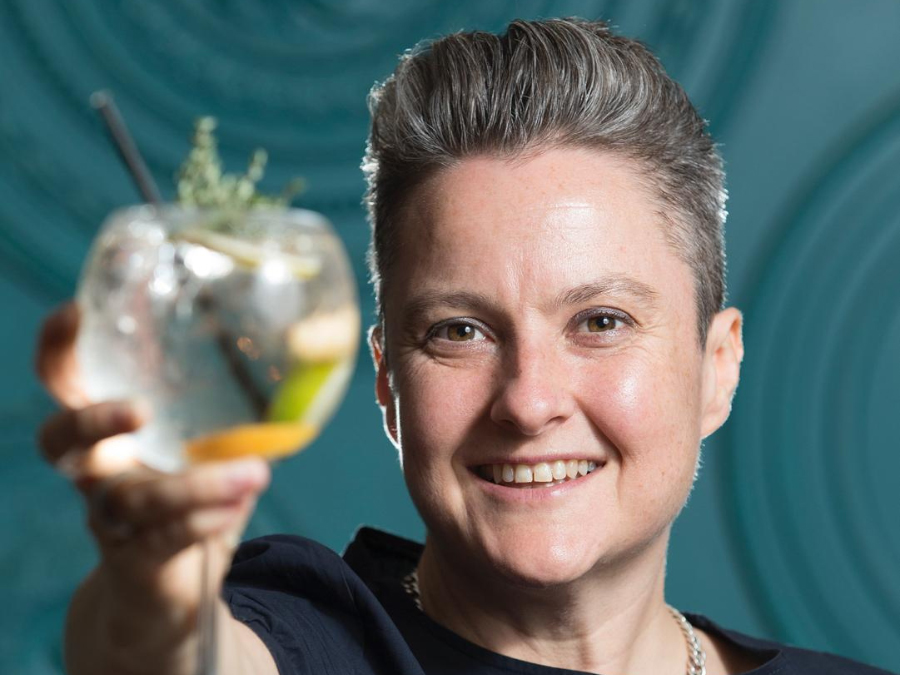
Laura Willoughby, the co-founder of Club Soda. Credit: The Real Co.
Hansen believes there will be “room for everyone” but concedes competition will grow. “Now you have 100 pages of wine, then you go to the last page and sometimes [non-alcoholic options] are even under the soft drinks,” he smiles.
“When we’re looking five years ahead, you will not only have one non-alcoholic alternative [on the menu]. In five years, they will have 25 and then, of course, it’s a battle of being on the glass and being top of mind or a brand that people recognise.”
Fizzing with optimism
Some pronouncements around the future of alcohol have seemed a little far-fetched but there’s no question there is growing interest in moderation and more drinkers, across age groups, are more closely watching what they consume. That presents an opportunity for a range of non-alcoholic drinks but also a challenge as brands tussle for custom.
“In general, this is not a trend of replacing alcohol with non-alcohol. It’s a shift in consumer behaviours,” Hansen says. “We will not go back to smoking more cigarettes and drinking harder alcohol [but] alcohol will not disappear. That shift, you will just see more of that going forward. I mean, that’s pretty obvious. In restaurants, there will be more [options] out there. There will probably be new categories. Tea will probably not be the only one and then you will see that the wines will start to improve that quality.”
At Saicho, Winkworth-Smith says educating consumers about sparkling tea will remain vital and sommeliers will continue to be important. “When it comes to competition, it is actually a really good thing for us because the more people that know that there are really good quality drinks out there that happen not to contain alcohol, it then opens their eyes,” he says. “We’re such a young category that the more the top brands are driving that is good for all of us because there’s so much room to expand. The market in the future for sparkling tea and the whole category itself will be enormous.”
There is a belief that sparkling tea can continue to grow its market share not just in its current heartland of the upmarket ends of the on-trade and specialist retail but further into mainstream grocery, too.
Retailers, Begg argues, can see the benefits to their business of stocking sparkling tea among their wider range of low-and-no products. “I think they’re recognising that it has ended up with a slightly focused customer and they want products that will broaden the interest of the fixture,” he says. “You’re drawing a different consumer to the alcohol-free shelf and to the retailer in general as a consequence. They’re also experimenting with products because it’s a nascent category. It’s a growing category, a very rapidly growing category, one of the fastest-growing categories in retail at the moment, growing at around 35-40%.”
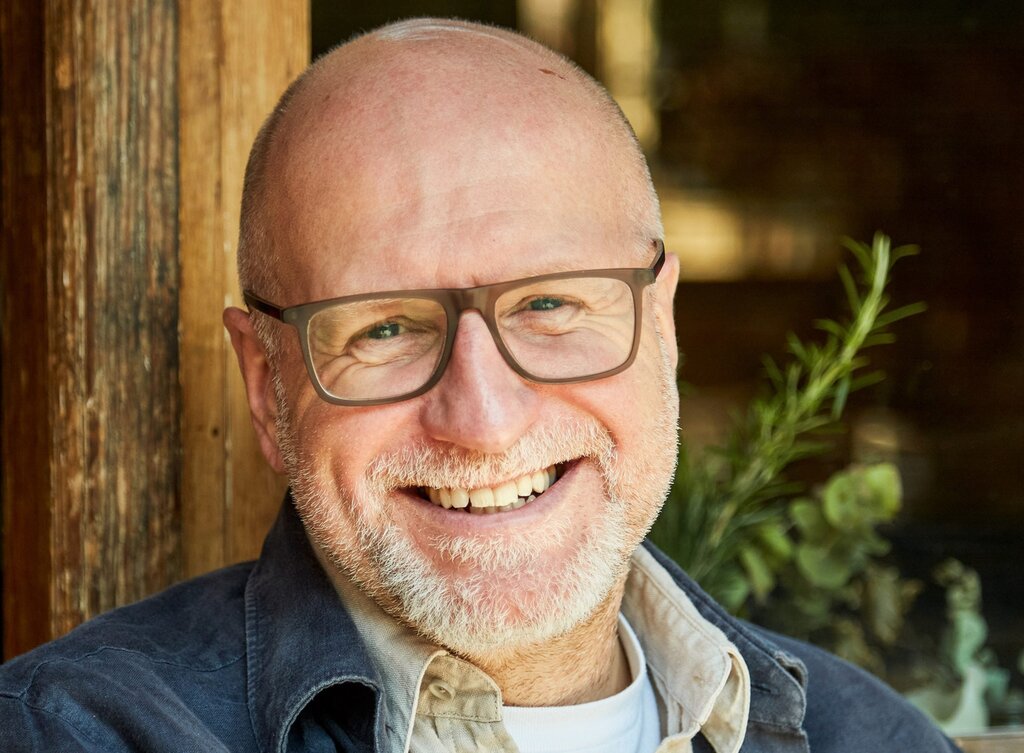
David Begg, the founder and CEO of The Real Co.. Credit: The Real Co.
A similar point is made by Willoughby at Club Soda. “Some of the multiple retailers need to understand that not only is the market for sparkling tea with people who still drink alcoholic wine but it’s also there for their diversity of customers. It’s, for example, people who’ve never drunk before and also who are not going to drink an alcohol-free wine because they’ve never learned to like the taste of wine,” she argues. “The multiple retailers underestimate people’s passion, interest and knowledge in tea by not adding it to that evening-occasion shelf.”
Winkworth-Smith adds: “We’re not saying this is going to be a $1bn market in the UK. That’s not the point but the product proposition that sparkling tea offers to the foodie, to the wine consumer, to the more sophisticated flavour-oriented consumer, is perfect in that space.
“With the right level of education across the sector, consumers will come to understand that actually a sparkling tea proposition is more interesting than a slightly second-rate alcohol-free wine.”
